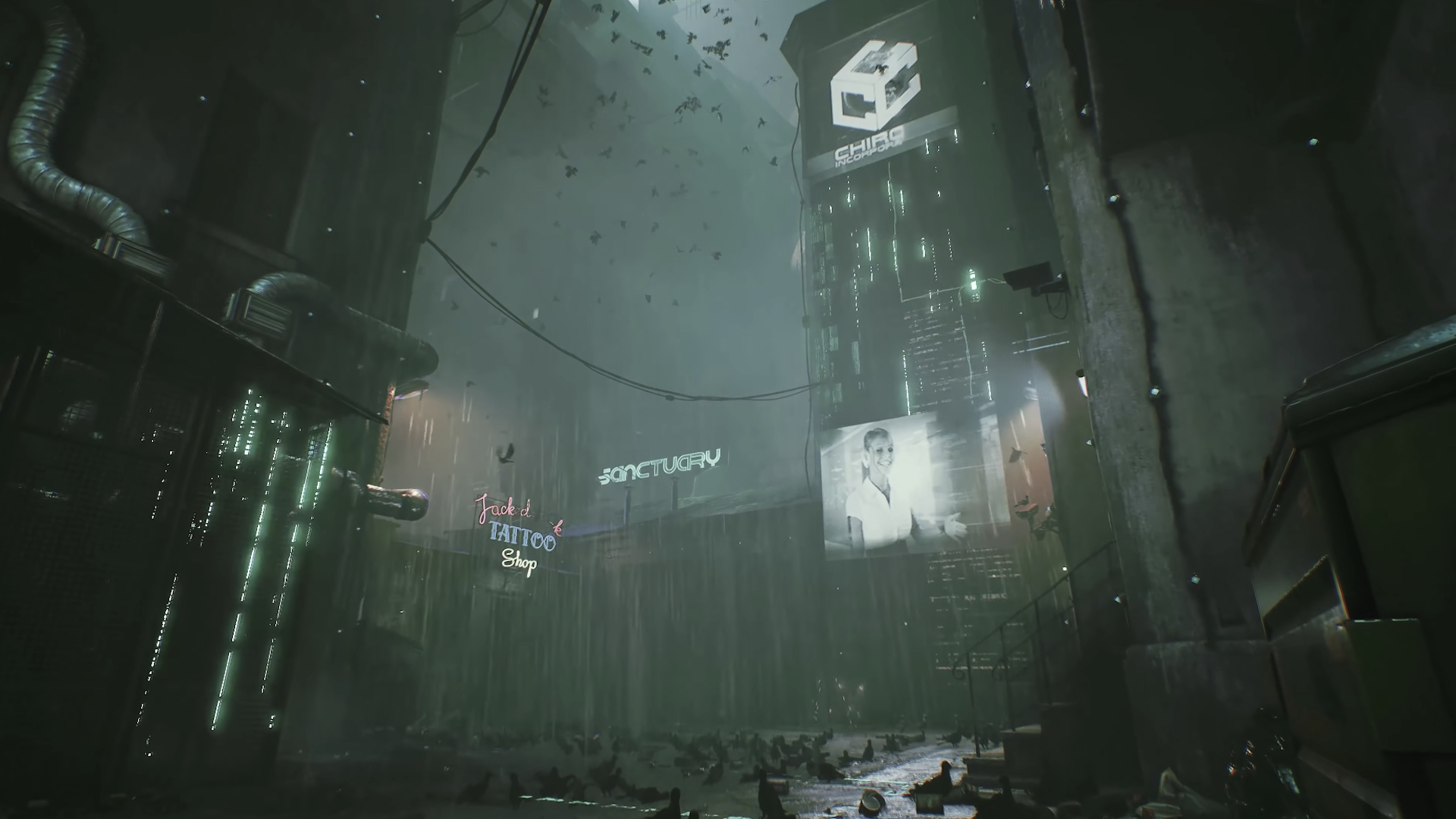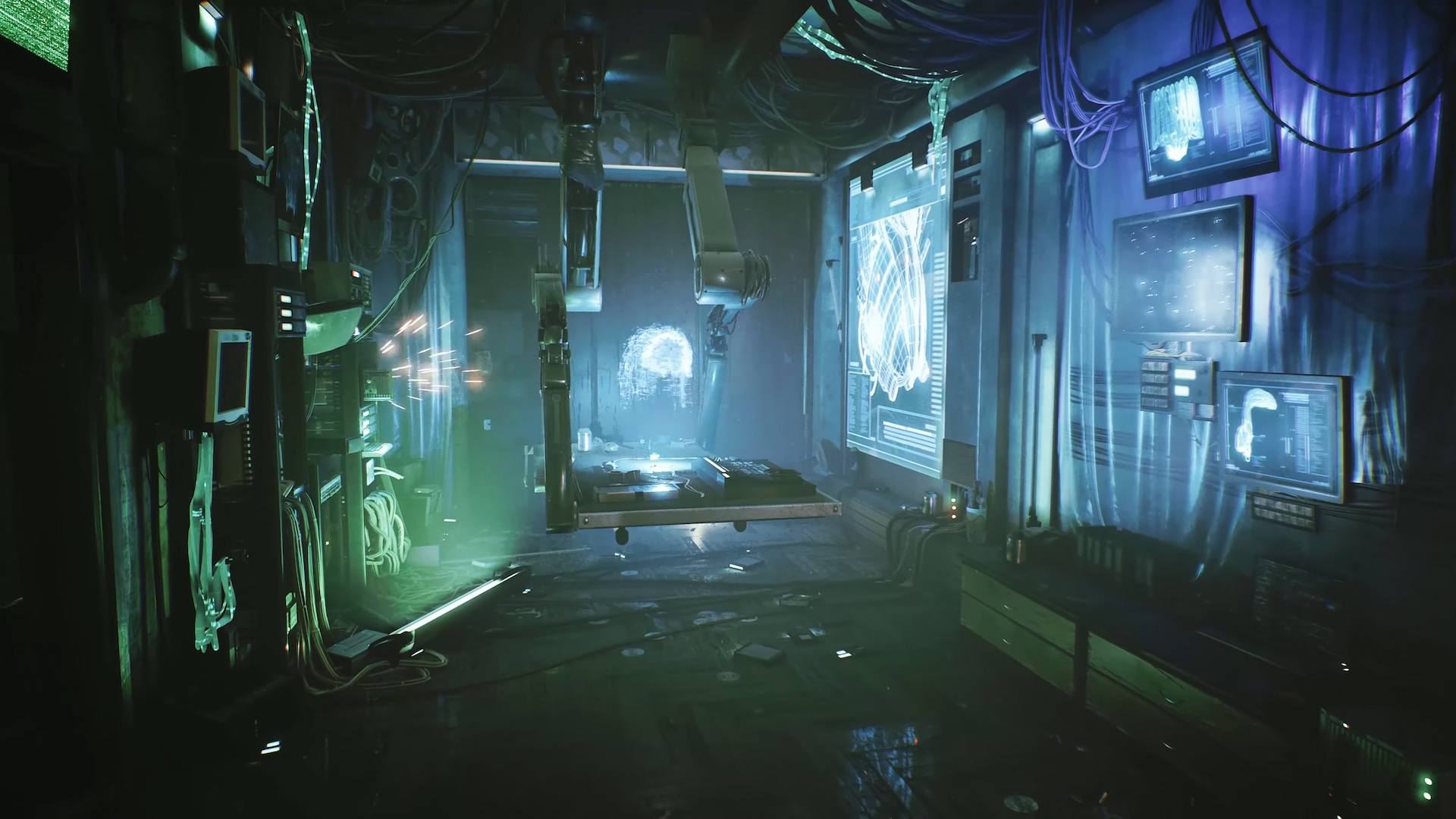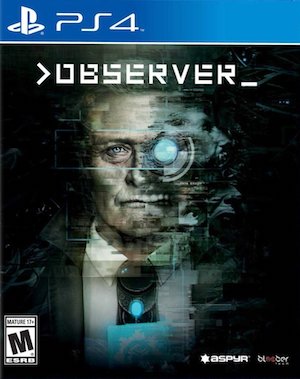
Bloober Team has made a name for itself by carving out a psychological horror niche that has proven successful since Layers of Fear took the world by storm in 2016. With the Layers of Fear series, Blair Witch, and Observer, the developer has found ways to evolve the formula while keeping the same tenets of each game, and, for the release of the new consoles, it decided to bring back Observer with updated visuals and a handful of new story and technical features. Observer: System Redux is fundamentally the same game as the original, and many of its problems have persisted through the upgrade, but what was already a solid, if not particularly unique or groundbreaking, psychological horror game has been made that much better with more resources under its belt.
As with the original, System Redux is set in the year 2084 in Krakow, Poland. The world has turned into a cybernetic dystopian future where virtually everyone has a microchip implanted in their brains and is monitored by the megacorporation Chiron. It’s such a familiar setting in media that the game never thoroughly explains how the world got the way it is, though there is a lot of world building regarding rebellious factions and other groups that don’t conform.
It seemingly expects you to accept the setting at face value and move forward from there, and it would’ve been nice to delve into more of the history behind the world. The plot revolves around Daniel Lazarski, a detective with the Observer subset of the police department whose work mirrors that of a homicide detective, though his tools are understandably much more futuristic. He can approach a murder or crime scene and scan anything with either a biometric or electromagnetic implant, which tells him details regarding evidence.
"Observer: System Redux is fundamentally the same game as the original, and many of its problems have persisted through the upgrade, but what was already a solid, if not particularly unique or groundbreaking, psychological horror game has been made that much better with more resources under its belt."
From the outset, Lazarski is tasked with finding and arresting the murderer of a tenant in an apartment complex, from which the game’s setting never really expands. This relatively straightforward investigation is the line that connects the entirety of the game’s plot, as a handful of murders make up the sequence of events that last the entire game. Some short side missions are the only divergences from investigating each crime scene and using the evidence to move either to the next one or to snuffing out the killer’s location.
Having such a compact game, which takes only 7-8 hours to complete, allows it to cut out a lot of the fat that other, longer games might contain, but it does get repetitive to see so little diversity in mission structure. Of course, there are larger and more complex themes at play that become more prominent as the game reaches its climax, but they don’t overshadow the relative simplicity of the plot’s substance. The story seems to want to explore some of these themes, especially regarding control, but it doesn’t ever give enough context to do so and leaves it to the player to sort out the pieces.
In place of a truly memorable plot are the visual style and highly memorable brain hacking sequences that occur throughout. Everything in the real world is constructed with colorful neon lights that give off a fittingly futuristic yet still engaging visual palette. The most interesting moments, though, come by way of Lazarski’s ability to hack people’s brain implants. One of his special privileges as an Observer is his access to any person’s brain chip, which lets him see inside their minds in the hopes of finding a clue as to who killed them or where a murder suspect could have come from. This access is manifested in the form of interactive nightmare sequences in which Lazarski watches and moves through what is effectively the victim’s life story.
While the game’s real world is contained primarily to the apartment complex, these nightmare sequences allow it to explore much more experimental and unique environments and visuals. Because they’re nightmares, there is no restriction on what can and can’t happen, so the game has the license to be as unsettling and ever-changing as it wants. As such, these sequences are easily the game’s most memorable and diverse. While there are only a handful of them throughout, each lasts long enough to have a lasting impact, and they don’t happen often enough to become stale.
Instead, I was always interested in what was happening within them. Whether things are seemingly normal within the apartment complex or completely absurd, like a puzzle that forces you to find and remove mind-altering computer chips that make a storage room look like a forest, they are always visually gripping and atmospheric, and they contain the most disturbing parts of the game because of how much uncertainty there is in what can come next within a nightmare.
"The story seems to want to explore some of these themes, especially regarding control, but it doesn’t ever give enough context to do so and leaves it to the player to sort out the pieces."
The nightmares are primarily linear walking simulators, but they do contain a handful of stealth moments that have luckily been improved from the original. Stealth no longer feels like a chore, though it has become much easier to walk virtually right past whoever is looking for you. Outside of the nightmares, the gameplay consists mainly of scanning environments for clues and talking to other people in the apartments. There’s very little that can go wrong in the real world, and the only obstacles you’ll face are the locked doors that lead to new areas, but these codes are almost always very easy to find.
The psychological horror aspects of Observer mostly lie in the atmosphere within the brain hacking sequences because of their wide-ranging possibilities, but the rest of the game mostly lacks any real tension that contributes to the same feeling. It’s unsettling to see a dead body or to hear the deranged conversations of people inside their apartments, but it never really put me on the edge of my seat.
An intermittent jump scare keeps you on your toes, but most of the scary sequences are more thrilling than downright terrifying, even in the nightmares. I found myself more unsettled by the state of a person’s mind than caught up in the fear that comes with games like Layers of Fear or Amnesia, and it quickly becomes monotonous when you get used to the dystopian tone, especially when you’re in the real world.
While System Redux isn’t solely a remaster, it’s easy to mistake it for one. The biggest upgrades are the noticeably improved visuals, which run at a solid 4K and 60 FPS and incorporate ray tracing. Needless to say, the game is downright gorgeous in its unique, often grotesque sense.
The number of particles flying across the screen and the way the lighting shines through the apartments are mesmerizing, further compounding the wide-ranging possibilities of the nightmare sequences to make them unforgettable. The other additions to the upgrade are new side missions, which are mostly in the shape of existing side missions and add some interesting new content but don’t make any real changes to the game’s core.
"The biggest upgrades are the noticeably improved visuals, which run at a solid 4K and 60 FPS and incorporate ray tracing. Needless to say, the game is downright gorgeous in its unique, often grotesque sense."
Observer: System Redux exemplifies the psychological horror dichotomy between visual style and concrete plot. There little truly interesting that actually happens within the story or that creates a consistently unsettling feel, but its visuals and environments do so much with so little. The brain hacking nightmare sequences are incredibly memorable pieces of mental exploration, and the environments in the real world are beautifully detailed.
The new additions to the package are highlighted by the gorgeous new visuals, which make the entire package’s presentation more intriguing. There are many uninspired aspects of Observer: System Redux that hinder the experience, but the game’s best moments make up for its downfalls with their truly remarkable explorations of the human psyche.
This game was reviewed on the Xbox Series X.
Beautiful upgraded visuals; Incredibly memorable nightmare sequences; Vivid atmosphere.
Lack of a tangible scare factor; Uninspired plot; Monotonous missions.



















